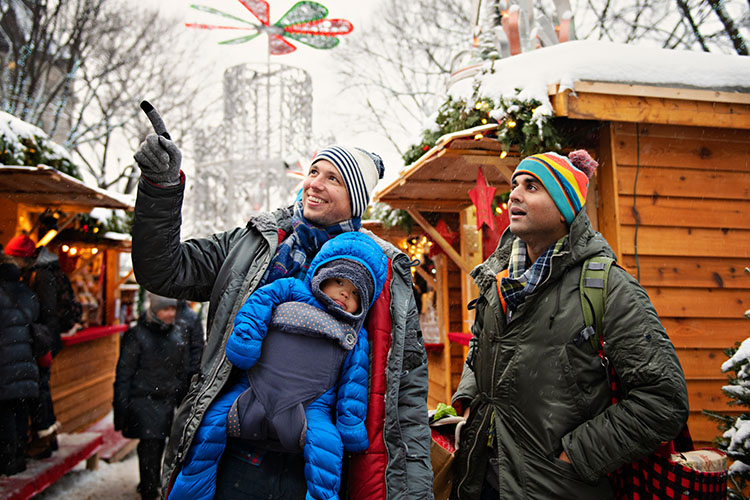Travel to Cold Climates

You don’t have to be in an arctic or high-altitude environment to encounter problems with the cold. Even in mild climates, humidity, wind, and rain can produce cold-related injuries in temperatures as warm as 50°F (10°C).
When traveling in cold climates
- Wear warm clothing in several loose layers.
- Wear a tightly woven, preferably wind-resistant coat or jacket; inner layers of light, warm clothing; mittens; hats; and scarves.
- In wet conditions, shoes should be waterproof and have good traction.
- Wear safety equipment to keep you warm and dry when engaging in adventure activities in cold weather or around cold water.
- Stay dry—wet clothing chills the body rapidly. Too much perspiration will increase heat loss, so remove extra layers of clothing whenever you feel too warm.
- Do not ignore shivering. It's an important first sign that the body is losing heat. Persistent shivering is a signal to return indoors.
”Extreme cold” means cold temperatures drop well below normal for a region. When temperatures are much lower than normal, heat can leave your body more quickly. Heat loss can lead to serious health effects, like hypothermia and frostbite.
Hypothermia
Hypothermia is a core body temperature below 95°F (35°C). While hypothermia is most likely at very cold environmental temperatures, it can occur even at cool temperatures (around 50°F) if a person becomes chilled from rain, sweat, or submersion in cold water. Even in temperate climates, people can rapidly become hypothermic in the water. Mild hypothermia can make you feel confused, and you may not realize anything is wrong until it is too late. Being too cold can also cloud your judgment and cause you to make mistakes, which can be deadly.
Early symptoms of hypothermia include shivering, feeling tired, being clumsy, and being confused. As your body loses more heat, the shivering may stop, your skin may turn blue, the pupils of your eyes may expand, your pulse and breathing may slow, and you may pass out. If you notice any of these signs, take your temperature. If it is below 95° F, the situation is an emergency—get medical attention immediately.
If immediate medical care is not available:
- Move to a warm room or shelter.
- Remove any wet clothing.
- Warm the center of the body first—chest, neck, head, and groin—using an electric blanket, if available. You can also use skin-to-skin contact under loose, dry layers of blankets, clothing, towels, or sheets.
- Drink a non-alcoholic warm beverage. Warm beverages can help increase body temperature, but do not drink alcoholic beverages. Do not try to give beverages to an unconscious person with hypothermia.
Frostbite
Frostbite is a bodily injury caused by freezing that results in loss of feeling and color in affected areas. It most often affects the nose, ears, cheeks, chin, fingers, or toes. Frostbite can permanently damage the body, and severe cases can lead to amputation. Modern clothing and equipment have decreased the risk for adventure travelers, but frostbite still occurs after accidents, as a result of poor planning, and in severe, unexpected weather.
Warning signs of frostbite include numbness or tingling, stinging, or pain where you are most exposed to the cold. If you detect symptoms of frostbite, seek medical care.
If immediate medical care is not available:
- Move to a warmer room or shelter.
- Remove any wet clothing.
- Warm the affected body part in warm water.